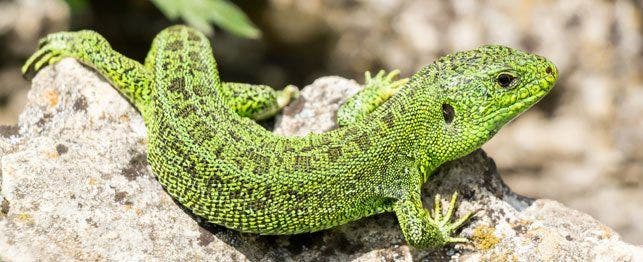
What to Know Before You Bring Home a Reptile
For some people, a dog or a cat just isn’t enough.
For these folks, owning non-traditional pets is an exciting adventure and a way to experience the animal kingdom up close and personal.
Some of the more popular and common alternative pets are snakes, lizards, and turtles, and all of them can make great additions to any home. But, before you purchase a reptile, keep in mind that ownership requires accountability and responsibility (as with any pet). Reptiles are considered exotic pets and may exhibit behaviors that could require special care and attention.
While the expert you purchase your reptile from may not think twice about the quirks of these exotic pets, a reptile rookie may have a rude awakening when they realize the amount of time, attention and costs that come with owning reptiles and amphibians.
Here are our top three things to know before you bring home that reptile.
Emotional Bonding
The first indication of whether or not you and/or your family are ready for a reptile can be easily determined by first impressions. If holding a lizard or having a snake draped around your neck conjures up an emotional response of, “I love him!” rather than, “Yuck, get this thing off of me!” then you’re probably ra good candidate for a reptile. Just know that your reptile may not reciprocate that love. Unlike dogs and cats, reptiles generally exhibit little — if any — emotional bonding behaviors. Reptiles are cold-blooded animals, and while they are capable of becoming friendly and recognizing your voice and smell, their life is one of instinct. All they’re looking to do is eat, mate, sleep, and eventually die. On the other hand, reptiles don’t shed hair, rarely pose an allergic threat, and they exercise themselves right inside their cages, so if you want to be a little more hands-off and don’t need to be greeted at the door by your pet, a reptile might be right for you.
Proper Care
One of the things that makes reptiles so popular is that they’re generally easy to care for. As a matter of fact, importing reptiles into America has become one of the fastest-growing pet markets since 1996. Housing a reptile is fairly simple, as well. Some Iguana owners have let their pets live openly, simply suppling them with a wooden tray containing a water dish, heat lamp and a dish for the pet to, hopefully, do it’s business in. However, most reptile owners utilize glass, screen-topped aquariums for terrariums. Ask the pet store for an estimate on how large your new reptile may grow to determine what size tank will be required. Bottom line, reptiles need housing that provides them with emotional and physical comfort. Emotional comfort means that the animal feels safe. Physical comfort means that the cage’s temperature and, to a lesser extent, humidity, are within the same range as your reptile’s origin. Also, it’s a good idea to quarantine the new family member before introducing them to any other others reptiles you may own, to make sure they don’t introduce any illnesses to the others, and to allow them to settle into their new home.
Feeding Habits
Since there is such a wide range of reptiles to choose from, diets may differ slightly depending on which animal you choose. Still, the main staple for most reptiles will be insects and rodents. Ask your pet supplier if your reptile should eat plants, insects, or rodents before you bring your new pet home. Some reptiles, like tortoises, love fruits and plants, while others, such as snakes, will find a live mouse most delicious. And if watching the circle of life in action isn’t your cup of tea, you can even purchase frozen rodents for your reptiles — just be sure to thaw them in warm water before feeding. Keep in mind, however, as reptiles grow larger, so do their appetites. It’s not uncommon to feed a full-grown python an entire rabbit as a meal. Iguanas are strictly herbivores, eating the leaves, berries, and fruits they find in the trees they climb. For plant-eating reptiles such as these, a bunch of leafy greens, fruits and/or vegetables from the refrigerator will suffice. Most lizards are insect eaters, and will thrive on a regular diet of crickets and mealworms. Again, before you bring your new pet home, get a clear of understanding of what the animal will eat, where you can obtain it, and the best ways to store the food.